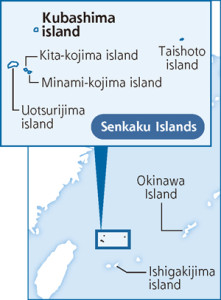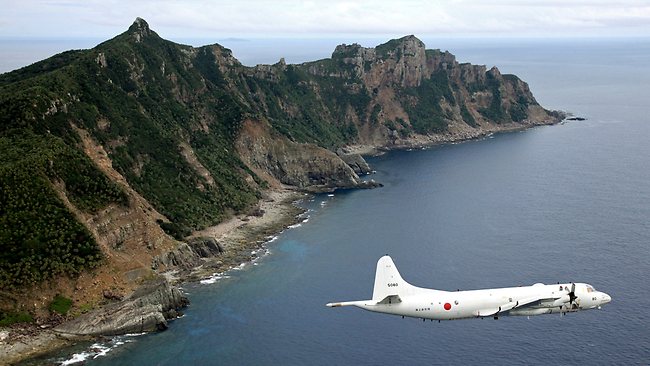
The Japanese government recalled its ambassador to China on 15 July for consultations related to a long-term territorial dispute over the Senkaku Islands in the East China Sea. Japanese Ambassador Uichiro Niwa was summoned home by Foreign Minister Koichiro Gemba for discussions concerning the island dispute. Ambassador Niwa’s recall was short lived and he returned to Beijing on 16 July. Details of the high-level government discussions were not, as is customary, made public.
Last week, three Chinese naval vessels were sighted patrolling the waters around the islands on two separate occasions, provocative events that drew two strongly-worded complaints from Tokyo. The three Chinese patrol ships were met by a Japanese Coast Guard vessel mirroring a Chinese/Philippine standoff that has occupied the better part of the past three months in a dispute over the Scarborough Shoals in the South China Sea. The Chinese ambassador to Japan was also summoned by Minister Gemba after the first sighting. The islands are known as the Diaoyu or Diaoyutai Islands by the Chinese.
The Senkaku Islands are uninhabited and legally owned by the Kurihara family, Japanese citizens who bought the islands from the previous Japanese owners decades ago. The Japanese government has leased three of the islands since 2002 at a cost of $304,000 per year and claims that a fifth island is state property. US military forces stationed in Japan have used the fourth island in the chain, also leased for an undisclosed amount, as a live-fire range since the end of World War Two.
The waters surrounding the island chain have long been bountiful fishing grounds and are believed to offer access to significant oil, natural gas, and rare earth reserves. As a prospective source of considerable natural wealth, the archipelago has attracted territorial claims of ownership from China, Japan, and Taiwan. Chinese and Japanese claims of sovereignty both have merit and historical precedent to support them; Taiwan’s claims are a bit more tenuous.
Tokyo Governor Shintaro Ishihara, a vocal nationalist, announced his plan to buy three of the islands owned by the Kurihara family in April, an idea that ignited immediate complaints from Beijing. Governor Ishihara promised to buy three of the archipelago’s most prominent islands to protect them from Chinese incursions on 16 April. Following quickly on the heels of Ishihara’s pledge, the Tokyo metropolitan government formally created a special bank account to accept private donations to buy the islands. As of this writing, the Tokyo government has collected a reported $16.3 million in donations to be applied toward the purchase of the islands.

In June, Governor Ishihara announced he was negotiating the purchase of the fourth island in the chain as well. A fifth smaller island and three barely visible barren rocks rounding out the chain’s landmass were not included in Ishihara’s plan.
The Japanese central government has, in years past, refrained from developing the islands to avoid any unnecessary disagreements with Beijing. In response to Ishihara’s plan, Japanese Prime Minister Yoshihiko Noda made public a government proposal to buy the entire archipelago from the Japanese owners on 7 July. When speaking to reporters, Minister Noda said that “the Senkakus are an integral part of our country’s territory in terms of history and international law.” He went on to say there existed no “ownership issue as Japan is in effective control of the islands.” Mr. Noda told reporters that formally nationalizing the island chain would strengthen the nation’s sovereignty claims.
Chinese government officials were quick to challenge Japan’s nationalization plan with Liu Weimin, speaking for the Chinese Foreign Ministry, saying that his government “will continue to take necessary measures to resolutely safeguard the sovereign rights of the Diaoyu Islands and adjacent islets.” He added that the islands “have been inherent parts of Chinese territory since ancient times and China has indisputable historical and jurisprudential evidence for this.”
A breakthrough in the disagreement appeared on the horizon in 2008 when Japan and China came to an understanding, an agreement never formalized, that the two nations would work together to jointly develop the oil and natural gas fields around the islands. This tentative agreement quickly fell apart when Tokyo accused the Chinese of attempting to establish a unilateral drilling operation in the area. In 2010, relations between the two Pacific neighbors took a nosedive when Japanese Coast Guard vessels were rammed by a Chinese fishing boat in the area and the Chinese captain of the vessel was arrested and returned to Japan for trial. Since that time, relations have followed a generally upward trend.
All of the disputes now plaguing Japan in the Pacific further highlight Japan’s reliance on US political and military support. Japan cannot honestly claim it has any rock-solid allies anywhere in the Pacific except for the United States. Japan’s rapidly growing economic problems have greatly diminished the nation’s ability to exercise any meaningful influence in international matters and the traumatic memories of the Empire’s brutal World War Two conquests harbored by many Asia-Pacific nations continue to hobble Japan’s efforts to develop mutually-beneficial relationships with neighboring governments.
The United States has followed a policy of watchful neutrality in the various Asia-Pacific territorial disputes including the Senkaku Island issue. While acknowledging that the Senkaku Islands are an integral part of the US mutual-defense treaty with Japan, Washington has refused to become embroiled in the ongoing dispute. Japan’s disagreements with Russia over the Kurile Islands have met with the same hands-off stance adopted by the US.
Japanese officials are concerned that America’s highly-publicized “pivot” to the Pacific may have a detrimental effect on Washington’s ability and willingness to maximize its efforts to provide for the defense of the island nation. While the US has invested heavily in the military installations located on Japanese soil, impending budget cuts and the Obama administration’s intense diplomatic efforts to build new relationships with other Pacific nations may lead to large-scale relocations of US forces that might leave Japan more vulnerable than is the case now.
For the foreseeable future, it appears Japan will have to muddle through these territorial disputes pretty much alone. Japan cannot surrender its claims without inviting more territorial challenges from other foreign interests, a completely unacceptable option for the Japanese.
















